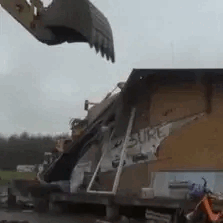Text
Vardzia, a Medieval Cave City in Georgia (South Caucasus), built in 1150-1200 CE: Vardzia was designed to be used as a fortress/monastery; it was accessible only through hidden passageways, and it contained more than 6,000 caves, 15 chapels, 25 wine cellars, an apothecary, a forge, a bakery, farming terraces, and an irrigation system
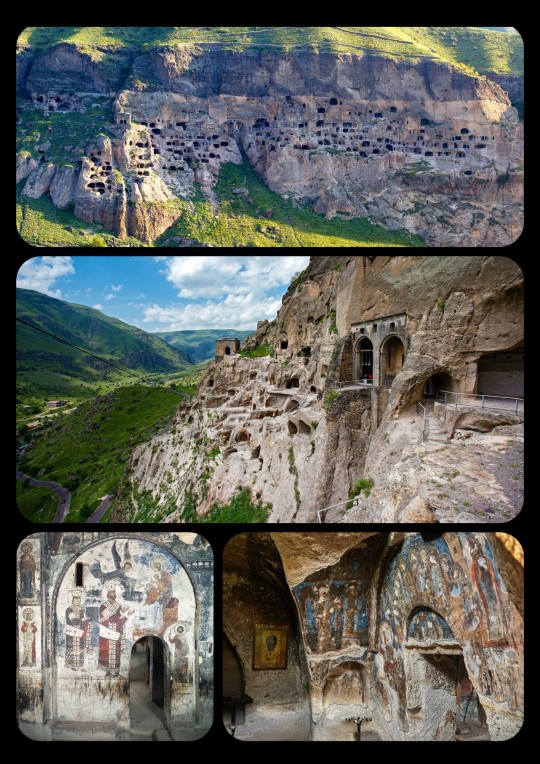
The monastic caves at Vardzia cover an area of about 500 meters. They are carved into the cliffs along the Erusheti mountains, which are located in Javakheti (a southern province near the borders between Georgia, Turkey, and Armenia).
Vardzia was originally meant to serve as a fortress, particularly in the event of a Mongol Invasion. It was protected by defensive walls, and the cave system itself was largely concealed within the mountain (though much of it is now exposed); it also contained a secret escape tunnel and several dead-end tunnels that were designed to delay/confuse enemy forces. The cave city could only be accessed through a series of hidden passageways that began near the banks of the Mtkvari River (which runs through the valley below the cave complex). Water was supplied through an irrigation system that was connected to the river, providing the inhabitants with both drinking water and agricultural irrigation, as the site contained its own terraced farmland.
The cave complex also functioned as a monastery, with a large collection of manuscripts and relics ultimately being housed at the site.

In its prime, the complex at Vardzia was inhabited by tens of thousands of residents.
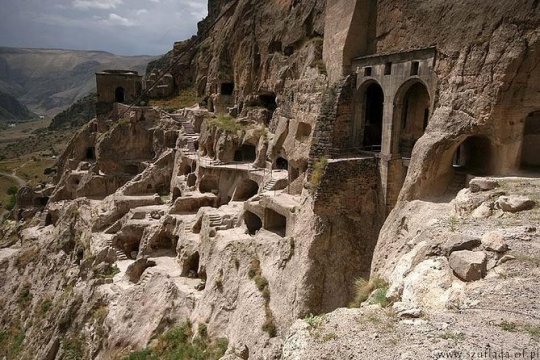
Unfortunately, most of the original structures at Vardzia were destroyed by an earthquake that struck the region in 1283 CE, just a century after its construction; the earthquake sheared away the outer layer of the cliffside, exposed many of the caves, and demolished almost two-thirds of the site. The surviving structures represent only a fraction of the cave complex that once existed at Vardzia, with only about 500 caves still intact.
When the earthquake tore through the site in 1283, much of the fortress and many of its defenses were also destroyed, and Vardzia lost most of its military/defensive purposes. Still, it continued to operate as a Georgian Orthodox monastery for several hundred years after that. It narrowly escaped the Mongol Invasions of the 1290s, but it was raided by the Persians during the 16th century; the invading forces burned many of the manuscripts, relics, and other items that were stored within the cave system, leaving permanent scorch marks along the walls of the inner chambers. The site was abandoned shortly thereafter.

Medieval portrait of Queen/King Tamar: this portrait is one of the Medieval frescoes that still decorate the inner chambers of Vardzia; Tamar was the first queen regnant to rule over Georgia, meaning that she possessed the same power/authority as a king and, as a result, some Medieval sources even refer to her as "King Tamar"
Vardzia is often associated with the reign of Queen Tamar the Great, who ruled over the Kingdom of Georgia from 1184 to 1213 CE, during a particularly successful period that is often known as the "Golden Age" of Georgian history. Queen Tamar was also recognized as the Georgian King, with Medieval sources often referring to her as King Tamar. She possessed the powers of a sovereign leader/queen regnant, and was the first female monarch to be given that title in Georgia.
The initial phases of construction at Vardzia began under the command of King George III, but most of the complex was later built at the behest of his daughter, Queen Tamar, who owned several dedicated rooms at Vardzia and frequently visited the cave city. Due to her relationship with the cave complex at Vardzia, Queen Tamar is sometimes also referred to as the "Mountain Queen."
Despite the damage that the site has sustained throughout its history, many of the caves, tunnels, frescoes, and other structures have survived. The site currently functions as a monastery once more, with Georgian monks living in various chambers throughout the cave system.
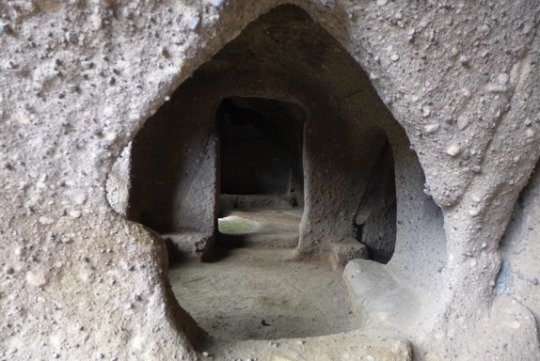
I visited Vardzia back in 2011, during my first trip to Georgia. It's an incredible site, though some of the tunnels are very narrow, very dark, and very steep, which can get a bit claustrophobic.
Sources & More Info:
Atlas Obscura: Vardzia Cave Monastery
CNN: Exploring Vardzia, Georgia's Mysterious Rock-Hewed Cave City
Lonely Planet: Vardzia
Globonaut: 5 Facts about Vardzia, Georgia's Hidden Cave City
Wander Lush: Vardzia Cave Monastery (complete visitor's guide)
610 notes
·
View notes
Text
Cannibalism as a metaphor for I Was Hungry
11K notes
·
View notes
Text
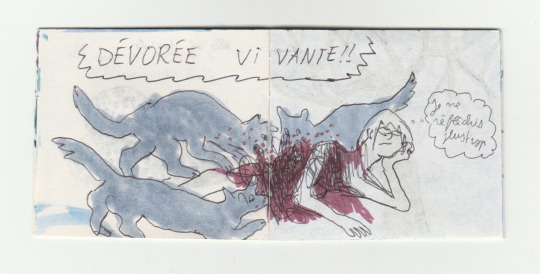
EATEN ALIVE!! I don't think about stuff much anymore
12K notes
·
View notes
Text
UESP Out of Context

1K notes
·
View notes
Text
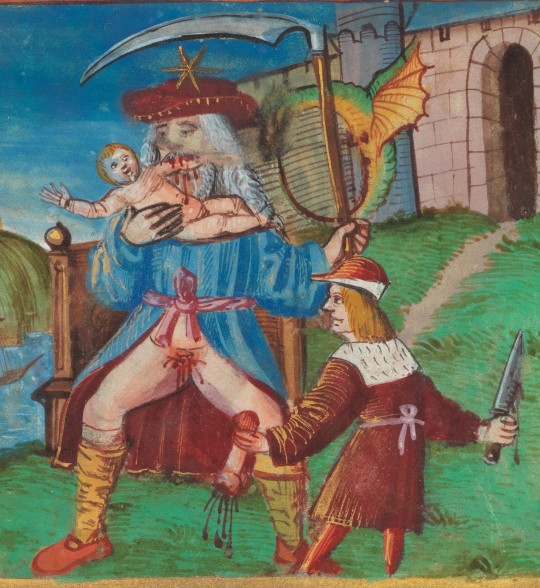

the castration of saturn
miniature from a composite manuscript containing poems by antitus faure, france, c. 1500
source: Chavannes-près-Renens, Archives cantonales vaudoises, P Antitus, fol. 18v
841 notes
·
View notes
Text
advertisement should be illegal. this is based in the 3rd pillar of my belief system: leave me the fuck alone
49K notes
·
View notes
Text
Apple propaganda notwithstanding, the reason tower PCs are big isn’t because they’re outdated. The reason tower PCs are so bulky is because they’re designed to be user serviceable. The case has lots of open space so your big, meaty hands can easily access all of the components, and everything is secured with friction-fit tabs and standard machine screws to minimise the need for specialised tools. A properly laid out tower PC is fully serviceable with a single Phillips-head screwdriver and no greater manual skill than your average Lego playset – heck, for some of the more modern case layouts you don’t even need the screwdriver, unless you’re performing major surgery like a full motherboard replacement.
Like, think about who benefits from convincing you that a fully modular computing device that can be serviced and repaired with your bare hands and minimal technical skill is unfashionable.
138K notes
·
View notes
Text

665 notes
·
View notes
Text

🐭
790 notes
·
View notes
Text
Idea: when fighting a werewolf, cast Invisibility on them!
Possible benefits: if moonlight isn’t shining on them (it would go through without reflecting) they might turn back into a person.
Possible downsides: invisible werewolf.
1K notes
·
View notes
Note
I wish I had a big dick, like a horse big dick

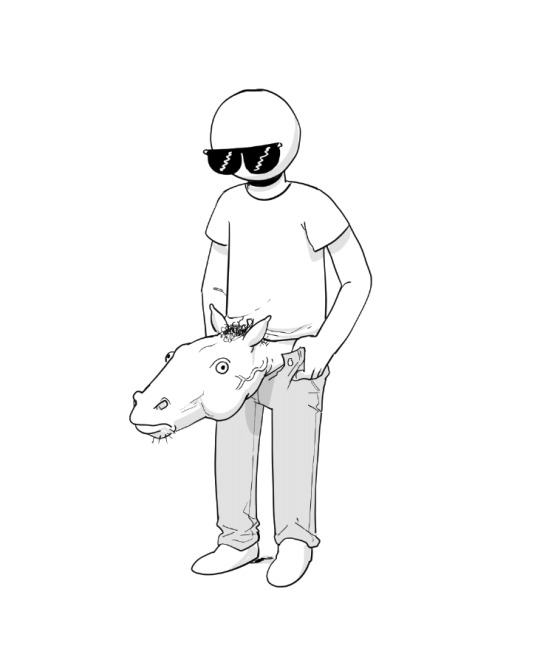

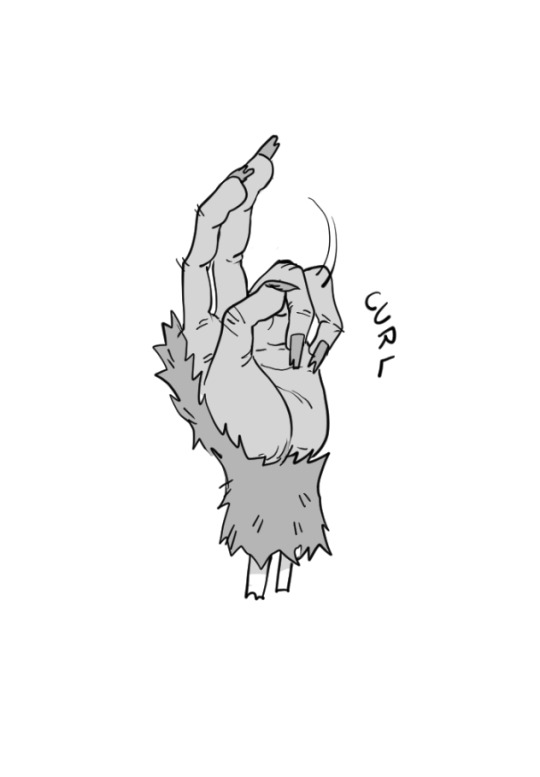
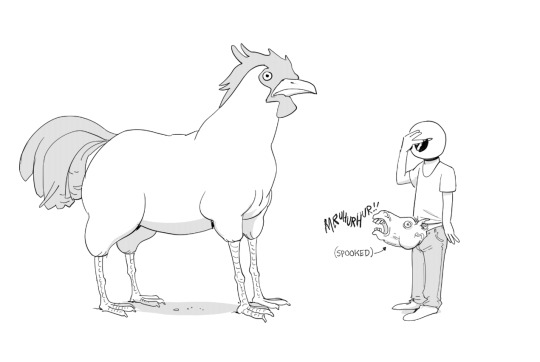
2K notes
·
View notes
Text
Once upon a time, in the heart of a dark and rainy night, a creature appeared at an abbey, climbing through a window to into the room where the abbess was writing notes. It was a wretched beast, not quite human but neither did it resemble any animal that the abbess could name. It was dripping wet, with scarred skin and odd patches of thin, sparse fur, long cracked claws that scraped the stone floor, and sharp teeth so haphazardly scattered that it was hard to say whether there were two rows of teeth or one.
"What do you want, creature?" the abbess asked it calmly.
"I want to become a nun", the creature said. And there was no rule in the books that the abbess could remember that say that would prohibit a strange beast from becoming a nun, if it so desired. So, the beast was accepted into the abbey, and it took to life in the order as naturally as a shepherd dog to herding. She was a meticulous beast, first to wake and rise at dawn, neat and tidy with all tools and tasks she was given, dutiful and devout in all things.
No nun nor novice dared to question the creature's right to be there after the first time the she demonstrated that her teeth are not merely for decoration, and then apologised to the novice who had tried. The beast even graciously offered to mend the habit she had torn. After the incident, she was never bothered again. A handful of other postulants, novices and even a few of the nuns flocked to her, knowing that the creature would not allow anybody to be mistreated in her presence.
Watching the creature wolfishly lope across the abbey courtyard, with her ill-fitting, haphazardly placed cowl flopping as it went, the abbess contemplated the strange being. Despite of her sloppy, haphazard appearance, the beast really did have great potential to become a nun. A being so gentle and friendly could have done well just about anywhere, as would anyone so devout, but what made the creature such a good fit for monastic life was her love of routine. Waking up each morning at the same time, performing the same tasks and duties at the same time, the beast was not only tireless in her work, but actively delighted in regular routines. Which was why the abbey was such a good place for her, and she would one day make an excellent nun.
She was, without a doubt, a creature of habit.
3K notes
·
View notes
Text
I love making a gag character for D&D, forgetting they’re just a gag character, and then take a step back to look at the original ref

74K notes
·
View notes



